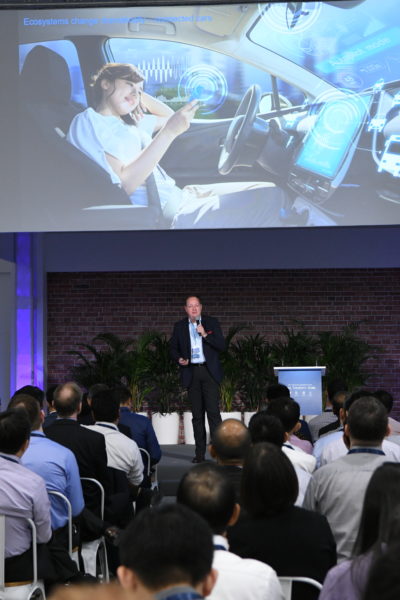
Blockchain, a distributed ledger technology, can be a game changer for telecom operators which can use it to offer new services such as tracking ownership of digital assets and physical goods, according to consultancy outfit McKinsey and Company.
Dr Jurgen Meffert, a consultant at the company, said it is a new business model telcos can consider because of their high credibility with customers.
Telcos have reliably provided telecom services for consumers and businesses. They have become trust centres, he noted.
As such telcos are well-suited to provide blockchain services because customers need to trust them to manage their transactions especially if they are happening in real-time, said Dr Meffert, a senior partner in the McKinsey Dusseldorf office
He suggested this as a new business telcos can enter because traditional telecom offerings of voice and video calls and messaging services are under siege. Non-telco companies like Apple, Netflix, WeChat and WhatsApp are riding on top of the telco networks, offering similar services for free, in the process eroding the telcos’ revenue.
“The culture of telcos is to build infrastructure where the returns on investment will take 10 years or more,” noted Dr Meffert.
“But digital disruption is happening today as in the case of WeChat and WhatsApp cannablising the telco revenues. The telcos’ utility model is under siege,” he said, in an interview with Techgoondu on the sidelines of a McKinsey Innovation Forum last Friday.
Blockchain, which has been associated with cryptocurrencies, is being considered across industries because it can be programmed to record any kind of economic transaction.
On the topic of digital transformation, Dr Meffert said that while “transformation doesn’t need to be tech driven, it has been observed that technology is available today at super low cost”.
He pointed out that in 1995, 500GB of storage would cost US$350,000. Today it is one cent. With technology available at low cost, the sheer power of computing to allow for things like machine learning, augmented reality and virtual reality have become more affordable and accessible to more organisations.
In e-commerce, for example, these new technologies can be used for “experiential selling” of, say, digital fittings. Instead of going to the shop to try out a new outfit, consumers can use a digital fitting room to try out a new blouse or suit, he said.
His advice for retailers is to understand what customers want, and engage and listen to them. Retail staff must approach customers with new propositions, get their feedback and then try to change.
Using technology to determine what to sell, retailers can appeal to customer segments and personalities and change retail dramatically, he added.






